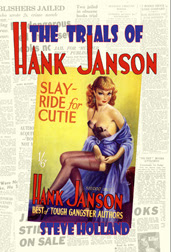The Battle Action Special is hitting comic book stores today!
Featuring seven brand new stories written by Garth Ennis – the mind behind The Boys, Preacher, and war comics such as The Stringbags and Sara – the 96-page hardcover anthology captures the spirit and action of the merger of the groundbreaking Battle and Action comics in the 1970s.
Behind the cover by Andy Clarke (Batman and Robin) and Dylan Teague (Madi), Ennis is joined by artists Mike Dorey (Ro-Busters), John Higgins (Watchmen), Keith Burns (Ladybird Expert series), PJ Holden (The Stringbags), Patrick Goddard (Judge Dredd), Chris Burnham (Batman) and League of Extraordinary Gentlemen artist Kevin O’Neill.
The 2000AD Website has been running a series of short features on the various characters that appear in the new volume. Here, for example, is an introduction to The Sarge:
Created by Gerry Finley-Day and Mike Western, veteran British sergeant
Jim Masters leads his ten-strong infantry section from one end of the
Second World War to the other: the Battle of France, the Western Desert,
Tunisia, Sicily and Italy.
On the way he tries his best to keep as many of them alive as possible, matching two wars’ worth of experience against the German army’s apparently effortless lethality. Men come and go, replacements fill the gaps, and the long slog up the dusty trail continues. The peculiar mixture of individuals that makes up the section gels under Masters’ leadership, turning the little unit into an effective combat force – but no one is safe when the bullets start flying. Together they stand, yet together they die, too.
If there is a third string to Finley-Day’s bow it must surely be heart, and never was this displayed more strongly than in The Sarge. The sheer likeability of the section’s personalities – Sid, Beet, Lover, Bates, Pete and the rest – is testament to the writer’s expert command of character, with Mike Western’s unmistakable line setting them all in stone (the creative team’s portrayal of Masters himself, leavening warmth and humour with occasional but very necessary brutality, is simply superb).
Their work laid the groundwork for the strip to continue past their tenure, with a follow-up by Scott Goodall and Phil Gascoigne that took the section from Normandy to the German homeland. One of the comic’s longest lasting strips at just over three and a half years, The Sarge must surely vie with Rogue Trooper from 2000 AD for the title of Gerry Finley-Day’s finest hour.
Here are links to the seven introductions...
Johnny Red and Skreamer of the Stukas.
The Sarge.
Crazy Keller.
Dredger.
Hellman of Hammer Force & Glory Rider.
Kids Rule O.K.!.
Nina Petrova and the Angels of Death.
And now, this week's other releases...
2000AD Prog 2285Cover: Tiernen Trevallion.
Judge Dredd: An Honest Man by Kenneth Niemand (w) Tom Foster (a) Chris Blythe (c) Annie Parkhouse
Terror Tales: Wunza by John Tomlinson (w) Eion Coveney, Alessandro Vitti (a) Simon Bowland (l)
Hope: In The Shadows by Guy Adams (w) Jimmy Broxton (a) Jim Campbell (l)
Brink: Mercury Retrograde by Dan Abnett (w) INJ Culbard (a) Simon Bowland
Fiends of the Eastern Front: 1963 by Ian Edginton (w) Tiernen Trevallion (a) Annie Parkhouse (l)
Black Beth: Vengeance Be Thy Name by Blas Gallego, Alec Warley & DaNi
Rebellion ISBN 978-178618635-5, 7 June 2022, 80pp, £16.99 / $24.
Available via Amazon.
A warrior with a name born of the black rage that filled her heart! In a
world of swords and sorcery, the evil tyrant Rassau discovers that he
is destined to be killed by a fearsome warrior called Beth. Together
with his men, Rassau seeks Beth out, destroying her village and killing
all held dear to her. With the aid of a former warrior - the blind Quido
- Beth becomes a skilled fighter and sworn enemy of all that is evil!
She will not rest until her people are avenged! This book contains both
the original strip and the brilliantly resurrected stories that have
been masterfully guided by writer Alec Worley and DC Comic's newest
star, the astonishing Greek artist, DaNi!
Essential Judge Dredd: Necropolis by John Wagner & Carlos Ezquerra
Rebellion ISBN 978-178618566-2, 7 June 2022, 224pp, £19.99 / $25.
Available via Amazon.
The essential Judge Dredd graphic novel series – the ultimate
introduction to the Lawman of the Future! Mega-City One is under siege
from the Dark Judges, Dredd has been exiled to the harsh wastelands of
the Cursed Earth and time is running out for the citizens he once swore
to protect. With the body-count rising and hope running out, will the
Judges be able to turn back the tide of death? Essential Judge Dredd:
Necropolis is the ultimate Judge Dredd Vs The Dark Judges storyline. A
comic book ‘summer blockbuster’, written and drawn by Dredd’s
co-creators John Wagner (A History of Violence) and Carlos Ezquerra
(Strontium Dog), where Dredd must reclaim his badge from the imposter
Judge Kraken and retake Mega-City One from the grip of the Dark Judges;
Death, Fear, Fire and Mortis.
Hawk the Slayer (Part III of V) by Garth Ennis & Henry Flint
Cover: Greg Staples.
The all-new comic-book sequel to the cult sword n' sorcery movie
continues as Hawk and his companions battle the nightmarish horrors of
the Forest of Weir, and converses with the spirit of Hawk's father in
order to find out the secret of the Mindstone, while the resurrected
Voltan brings yet more carnage to the land in his search for Hawk.











.jpg)















































































